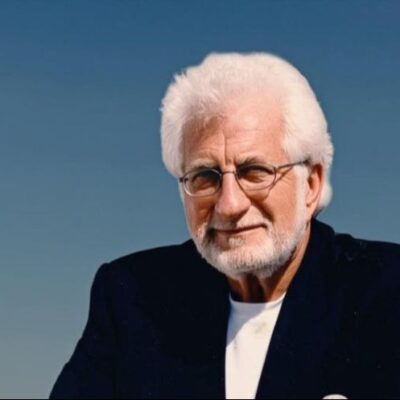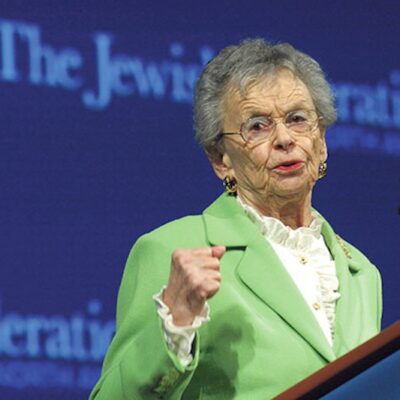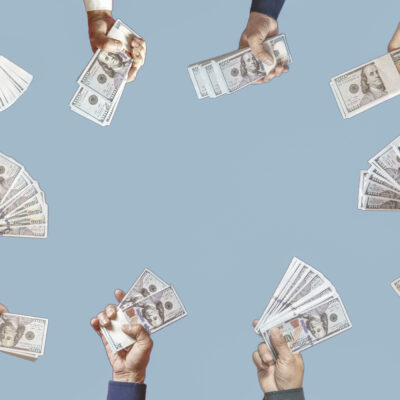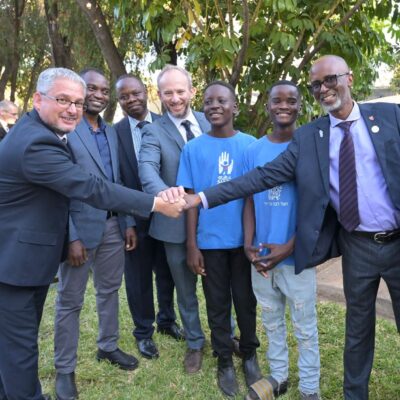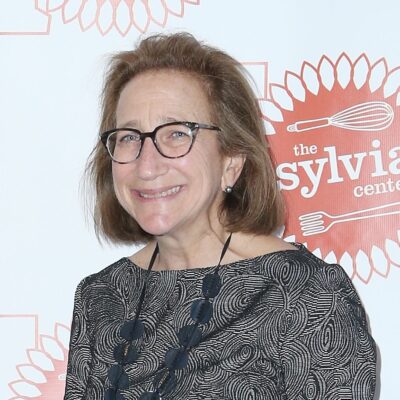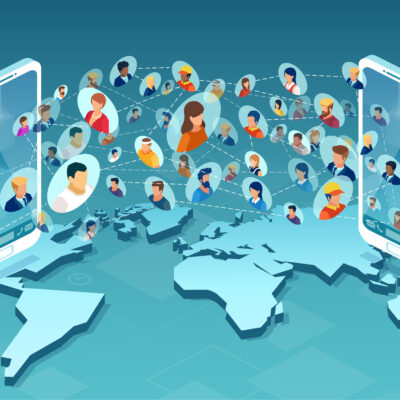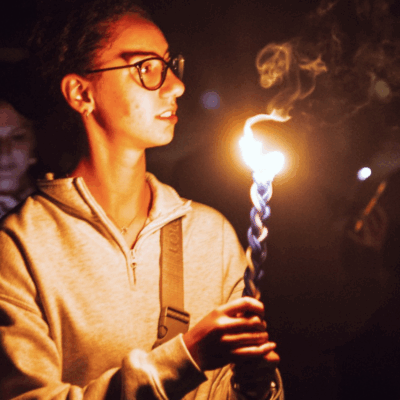BREAD OF AFFECTION
Los Angeles interfaith Seder celebrates unity and resilience in wake of wildfires
'This gathering served as a powerful reminder of the enduring resilience of the human spirit and the transformative force of unity in the face of adversity,' Rabbi Noah Farkas, president and CEO of the federation, said at the event

courtesy/Kathy Dennino
Participants at the Jewish Federation Los Angeles' interfaith Seder at the city's Museum of Tolerance on April 3, 2025.
The Jewish Federation Los Angeles, in collaboration with the city’s Museum of Tolerance, hosted its annual Interfaith Passover Seder on Thursday, bringing together faith leaders, first responders, civic officials and Angelenos directly impacted by the recent wildfires.
This year’s Seder, held at the museum, carried the theme “From Hardship to Hope: The Power of Collective Strength,” focusing on the devastating wildfires that ravaged parts of Los Angeles. Nearly 20 religious institutions were lost to the fires, and countless other houses of worship suffered irreparable damage.
Originally planned as an outdoor event, the Seder was moved indoors due to rain that began earlier in the day. Attendees included community and religious leaders and elected officials, among them newly elected Beverly Hills Mayor Sharona Nazarian, Rep. Luz Rivas (D-CA), LAFD Interim Fire Chief Ronnie Villanueva and LAPD Commander Jonathan Tom.
Each year, the federation assembles a new guest list with the goal of fostering better understanding and bringing community members together. Each participant received a special Haggadah that explained the key elements of the Passover Seder, including the meaning of the Four Questions and the story of the Exodus from Egypt.
“On Passover, we tell our freedom story so that we can pass it on to new generations. Jewish tradition teaches that it is important to ask questions — only through inquiry can we truly understand ourselves and the world around us,” it reads.
Ken Croft, founder and CEO of Hope for the Mission, a leading housing provider in Los Angeles, reflected on his previous Seder experience. “For me, it was eye-opening. It was very enlightening to connect with the symbols of the Jewish faith and the history of Judaism and to be able to celebrate Passover — the exodus of the Jewish people from bondage. It’s also a reminder that human nature doesn’t change much, that those who want to oppress and bring harm to others need to be resisted, and we must do our best to ensure it never happens again.”
Nirinjan Singh Khalsa, who has represented the Sikh community for over 40 years, shared that he has been a guest at many Passover Seders and learned much about the holiday over the years. “In these times of diversity, conflict and the forces threatening to tear the world apart, it’s crucial to come together and support one another,” he said. “We may be a smaller community than the haters, but we must keep the fire of understanding, peace and community alive among different religions.”
Attorney Sanaz Meshkinfam, an Iranian Jew who immigrated to the U.S. with her family when she was 9, saw the Seder as an opportunity to connect with community leaders. “It’s wonderful to see how the Seder brings all of us together — the different faith and ethnic leaders — to share our story. It’s actually a story shared by all people, of overcoming challenges, survival and also thriving.”
Before dinner was served, guests heard from public officials and enjoyed a musical performance by Media Musicians United, a collective dedicated to supporting artists who lost their equipment in the fires. Their performance served as both a tribute and a symbol of renewal, emphasizing the role of creativity in healing after trauma. Additionally, attendees participated in an interactive art exhibit organized by ONENESS, a statewide initiative promoting unity, tolerance and inner peace.
Rabbi Noah Farkas, president and CEO of Jewish Federation Los Angeles, emphasized the Seder’s deeper significance, stating, “Passover provides a springboard for reflection, unity and resilience. In the spirit of this holiday, our Interfaith Seder honored the collective strength of the Los Angeles community. This gathering served as a powerful reminder of the enduring resilience of the human spirit and the transformative force of unity in the face of adversity.”
Jim Berk, CEO of the Simon Wiesenthal Center, echoed these sentiments, highlighting the universal nature of Passover’s story. “The Museum of Tolerance is honored to welcome members from Los Angeles’ diverse tapestry of faiths and communities for this interfaith Seder. The story of a people moving from slavery to freedom that is told at every Passover Seder table is a universal journey offering hope for people from every faith and community.”
L.A. City Councilmember Katy Yaroslavsky reflected on the sense of unity that emerged in the aftermath of recent wildfires. She noted that her district had become home to evacuation centers and shelter sites, where strangers and neighbors spontaneously came together in a moment of crisis. Witnessing so many people step up without being asked, she said, was a deeply moving experience.
“It reminded me of the words we say at the beginning of every Seder: ‘Let all who are hungry come and eat; let all who are in need come and celebrate Passover with us,’” Yaroslavsky said. She emphasized that this call to open one’s doors, especially in times of pain and hardship, is more than just a ritual — it is a collective responsibility.
“The beauty of tonight is in what it represents: different faiths and backgrounds coming together not in spite of our differences but because of them,” Yaroslavsky continued. “I had the privilege to join many of you in your places of worship and celebration, and each time I left with a deeper understanding of the strength that lives in our diversity. When we show up for each other through fire, fear or joy, we build a city rooted not just in intolerance, but in love and collective strength.”
Round tables, each with a Seder plate, wine, vegetables, dips and fruits welcomed the attendees. The Passover meal included salad, stuffed cabbage, grilled veggies, chicken, dessert and lively conversation around the dinner table.
“We have more in common than we think we do,” said Lila, a Muslim woman, to the young Jewish woman sitting next to her at the dinner table. It was the first Seder she had ever attended. “It’s moments like this, when we gather across faiths and cultures, that we truly see how much more we are alike than different — and how much we can learn from each other.”



